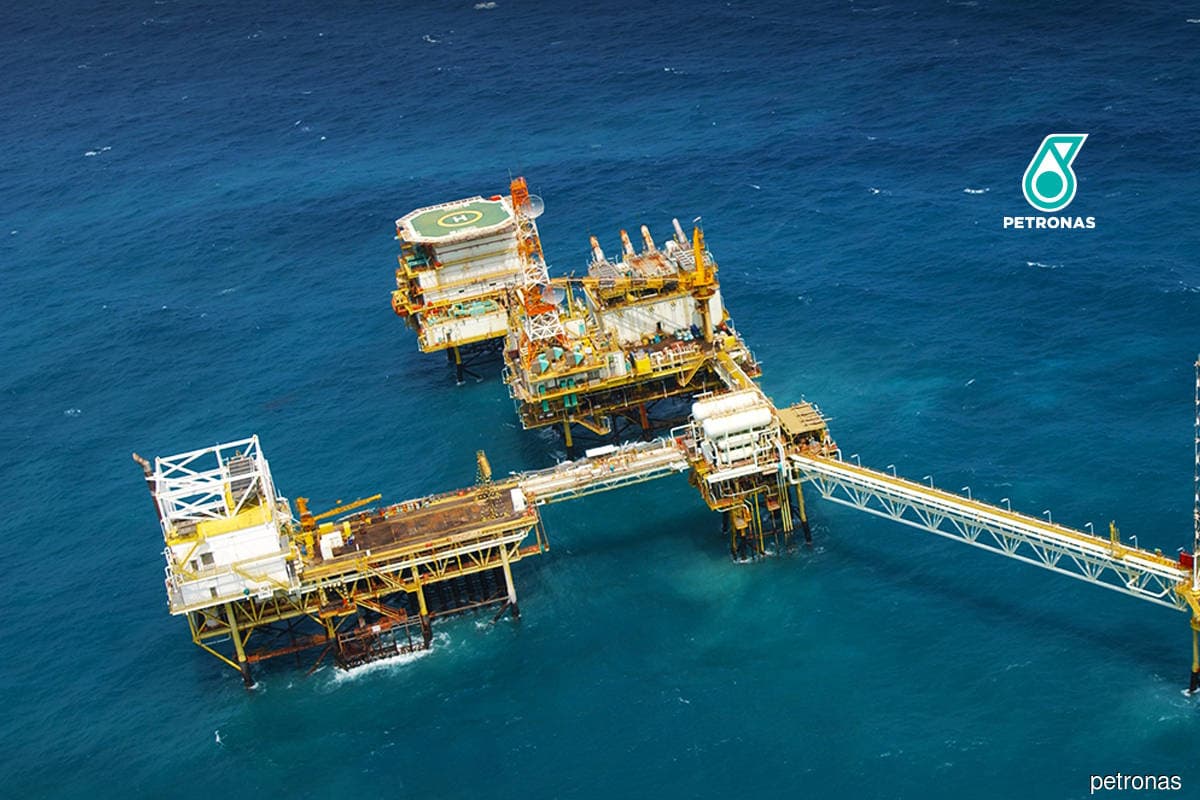
Petronas expects 45 upstream projects to be executed over the next three years, four central processing platforms to be fabricated, three onshore facilities to be constructed, and 1,130km of pipelines to be fabricated and installed.
KUALA LUMPUR (Dec 20): Petroliam Nasional Bhd (Petronas) expects to carry out an average of 300 facilities improvement plans (FIPs) yearly for the next three years to maximise production efficiency and sustainability of oil and gas supply, according to the state-owned oil company’s activity outlook report for 2024-2026.
These FIPs include rejuvenation projects, gas turbine and gas generator change-out activities, as well as other major maintenance works that are crucial in eliminating bottlenecks, maximising hub capacity and curbing flaring activities at new onshore facilities.
Petronas will also carry out decommissioning activities for some 150 matured assets to restore the area to a safe and environmentally stable condition, while disused assets will be assessed for potential reuse or repurposing.
The report projects that in 2024, 99 wells will be drilled under its development, appraisal and exploration drilling programme.
“Significant increase is expected for plug and abandon activities in 2024 to honour the commitment made by the regulator [Malaysia Petroleum Management],” said Petronas in the report.
“For the next three years, more than 25 wells are forecasted to be drilled each year with a focus on shallow water wells in Peninsular Malaysia and Sarawak, and deepwater wells in Sabah to sustain and spur exploration growth in the country,” it added.
Petronas said its future is anchored on a long-term target to sustain and grow Malaysia’s oil and gas production of two million barrels of oil equivalent per day by 2025 and beyond.
“This will be supported by various oil and gas projects in the pipeline such as Kasawari, Jerun, Rosmari-Marjoram and Lang Lebah in Sarawak, Gumusut-Kakap Redev and Belud Clusters in Sabah, and Bekok Oil Redev, Tabu Redev and Seligi Redev in Peninsular Malaysia, amongst others,” it said.
According to the group, Malaysia’s production currently stands at about 500,000 barrels per day of liquids and 7,000 million standard cubic feet per day of gas.
Petronas is expecting 45 upstream projects to be executed over the next three years, with four central processing platforms to be fabricated, three onshore facilities to be built, and 1,130km of pipelines to be fabricated and installed.
“In this area, Petronas and the petroleum arrangement contractors (PACs) expect OGSE (oil and gas service and equipment) and industry players to provide the essential products and services required to drive the success of these development projects to be on time, on budget, on scope and on value,” it said.
In a statement on Wednesday, Petronas said the report’s outlined forecasted activities call for greater collaboration with the OGSE providers to ensure energy demand is met, while ramping up its clean energy initiatives.
“Within the next three years, Petronas is committed to its long-term target of sustaining and growing Malaysia’s oil and gas production. This is anticipated to open opportunities for the OGSE providers across exploration, development, production and decommissioning activities,” it said.
“In meeting the energy demand to sustain an economic growth, Petronas is cognisant of the fact that the energy needs to be delivered in an affordable and sustainable manner.
“The challenge lies in producing more barrels of oils at the lowest cost and emission possible. By outlining the forecasted activities for the years ahead and with it, the challenges and opportunities can foster a stronger OGSE ecosystem to ride this energy trilemma together,” it added.
Petronas said the downstream business is increasingly expanding into cleaner energy initiatives, venturing into biofuels with the ongoing development of a greenfield biorefinery and co-processing plant set to begin in 2026, alongside the expansion of liquefied natural gas bunkering and the Petronas Iona range — a dedicated range of automotive fluid solutions for electric vehicles and other thermal management application across diverse sectors.
The group’s petrochemical arm is also making inroads into the specialty chemicals market and is actively driving the circular economy through the construction of Asia’s largest advanced chemical recycling plant that converts end-of-life plastics into pyrolysis oil to be used as chemical feedstock for sustainable plastic production.
“The industry should be gearing toward adapting to the energy transition, such as shifting toward lower-carbon endeavours, pursuing net zero emissions, and exploring renewable energy sources,” said Petronas vice president of group procurement Freida Amat.
“Through cross-industry experiences, insights and knowledge, we believe co-creation can upskill our capabilities and skills, which will chart new frontiers for the OGSE industry,” she added.


